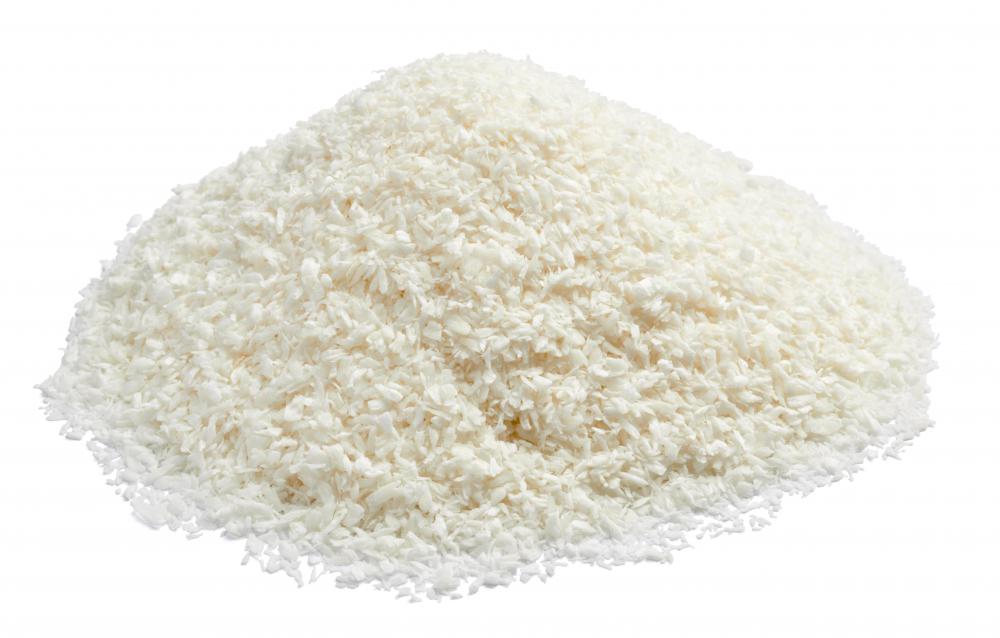At BeautyAnswered, we're committed to delivering accurate, trustworthy information. Our expert-authored content is rigorously fact-checked and sourced from credible authorities. Discover how we uphold the highest standards in providing you with reliable knowledge.
What Are the Pros and Cons of Using Calcium Stearate?
Calcium stearate is a calcium salt derived from calcium oxide and stearic acid that is commonly found in cosmetics, plastics and food products. There are both pros and cons of using calcium stearate. This substance is very useful when used as a thickening agent, flow agent and waterproofing agent, which makes it popular in cosmetics and other products. A disadvantage of using this substance is that it can cause irritation, and when using calcium stearate in soap, it can leave behind a slimy film. Another disadvantage is that many vegetarians and vegans are forced to avoid products that contain stearic acid, since it is sometimes derived from beef tallow.
One of the greatest advantages of calcium stearate is that it can be used in a variety of products to accomplish a number of different goals. In cosmetics, food and other products, it is used to prevent caking, improve texture and thicken materials. This substance is also used as a flow agent, which means that it reduces friction and facilitates the flow of other substances. The pharmaceutical industry uses this substance in many different medications, and the industrial industry uses it for its ability to waterproof various materials.

In addition to its various applications, there are a few disadvantages of using calcium stearate. When applied to the skin, some people experience certain calcium stearate side effects like redness and itching. If this substance comes into contact with the eyes, it can cause irritation and should be flushed from the area immediately.
While calcium stearate is sometimes used in surfactants, there are some disadvantages of using it in soaps and other cleansers. When combined with water, this substance does not form a creamy lather. Instead, it creates a slimy substance known as soap scum. Soap scum will not only accumulate on tubs and showers, but it can also leave an unwanted film on the skin and hair. For these reasons, many manufacturers have begun using more effective surfactants in their products.

For some consumers, the materials used to make calcium stearate also pose a problem. Since stearic acid is sometimes derived from beef tallow, it is commonly avoided by people who practice vegetarianism or veganism. To avoid consuming animal products, many vegetarians avoid foods and medicines that contain stearic acid. Vegans typically avoid using any product that contains this ingredient unless it is clear that the substance was derived from plant materials.
AS FEATURED ON:
AS FEATURED ON:












Discuss this Article
Post your comments